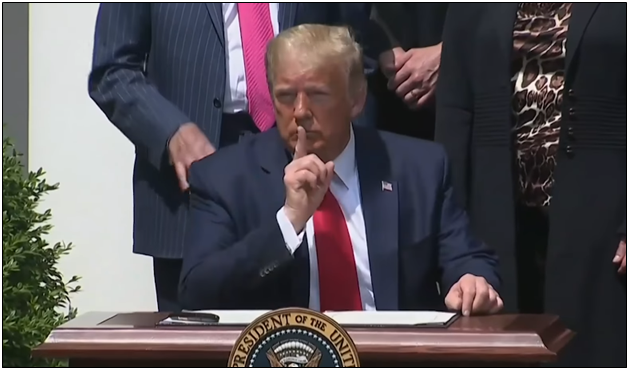In 2016, President Donald Trump consistently underperformed in presidential election polls versus actual voting results leading up to his historic victory against Hillary Clinton.
Using the RealClearPolitics.com average of polls in the days before the election, polls underreported Trump’s support in key battleground states that he ended up winning.
In Florida, polls underreported Trump support by 2 percentage points, in North Carolina by 3.3 points, in Ohio by 5.5 points, in Pennsylvania by 3.5 points and Michigan by 4.1 points.
Trump won with 49 percent of the vote in Florida, 49.8 percent of the vote in North Carolina, 51.7 percent of the vote in Ohio, 48.2 percent of the vote in Pennsylvania and 47.5 percent of the vote in Michigan.
Nationally, polls underreported Trump’s nationwide support by 2.5 percentage points, when in the election he received 46.1 percent of the popular vote to Clinton’s 48.2 percent.
And those were the polls taken right before the election, which tend to be more accurate than those taken in the spring and summertime, which tend to oversample Democrats and appear intended to create panic in the GOP establishment and among voters, showing ridiculous lopsided margins against the Republican candidate.
At this point in the 2016 cycle, Clinton was leading Trump in polls taken across the country. A Quinnipiac poll in mid-June had Clinton up by 8 points in Florida, 47 percent to 39 percent. Off by 10 points to final outcome.
In early July an NBC/WSJ/Marist poll had Clinton up 6 points in North Carolina, 44 percent to 38 percent, a lead that would supposedly grow to 9 points by early July, 48 percent to 39 percent. Trump’s actual support was off by almost 11 points.
A PPP poll from late June had Clinton up by 4 points in Ohio, 44 percent to 40 percent. Off by almost 12 points.
An NBC/Marist poll had Clinton up by 9 points in Pennsylvania in late June, 45 percent to 36 percent. Off by 12 points.
In Michigan in early July she was said to be up 7 points according to Gravis, 48 percent to 41 percent. Off by 6.5 points.
Nationally, a late June ABC News/Washington Post poll had Clinton up 12 points, 51 percent to 39 percent. Off by 7 points.
These consistently inaccurate polling results defeated the predictive model of Nate Silver in the 2016 election, which said that state polls predict the outcome of presidential races. The bogus assumption then was that the polls would be accurate. They weren’t.
How could this be? In 2016, there was a lot of social pressure among families, friends and even professionally against Trump. If you were a Trump supporter, you could expect personal ostracization from peers and employers.
You might be called a bigot. A racist. A fascist. A Nazi. You name it.
And so, 2016 was a notoriously hard year to poll politically, given the fear of repercussions among Trump supporters. In 2020, the climate of social fear is arguably even worse. It’s cancel culture run amuck.
Robert Cahaly of Trafalgar Group, the only poll that called the 2016 race for Trump in Michigan, says in 2020 the race is a dead heat and that “social desirability bias” is “worse than it was four years ago.”
The goal was to make it socially unacceptable to support Trump. Instead, all that’s been accomplished is driving his support underground.
So, what do we see in June 2020? Former Vice President Joe Biden has a “comfortable” lead in the race, naturally. Biden leads Trump by 10 points nationally, by 6 points in Florida, he’s tied in Ohio, he’s up by 5.6 points in Pennsylvania and by 8 points in Michigan. In North Carolina, surprisingly, the polls show Trump up by 0.5 points.
In fact, Trump is ahead of where he was in 2016 at this point in the race, leaving Biden in a deceptively weak position compared to Clinton. If we’re seeing a similar cycle as last time, as the summer goes on and we hit the presidential nomination conventions, watch for Trump’s picture to improve somewhat, take a nose dive in the fall with <insert media-driven narrative catalyst here> and then by late October it will be a “dead heat.”
We’ve seen this movie before. It’s the one where the incumbent usually wins.
A silent majority? You better believe it.
Robert Romano is the Vice President of Public Policy at Americans for Limited Government.







